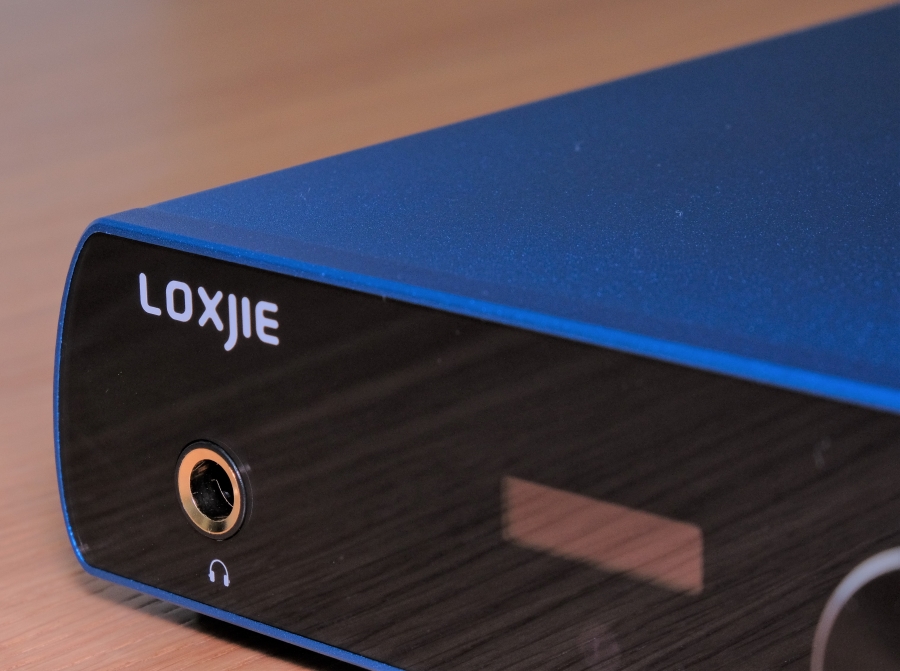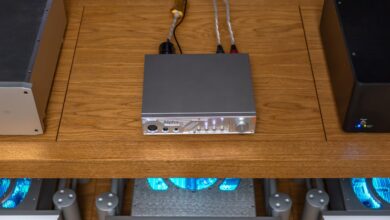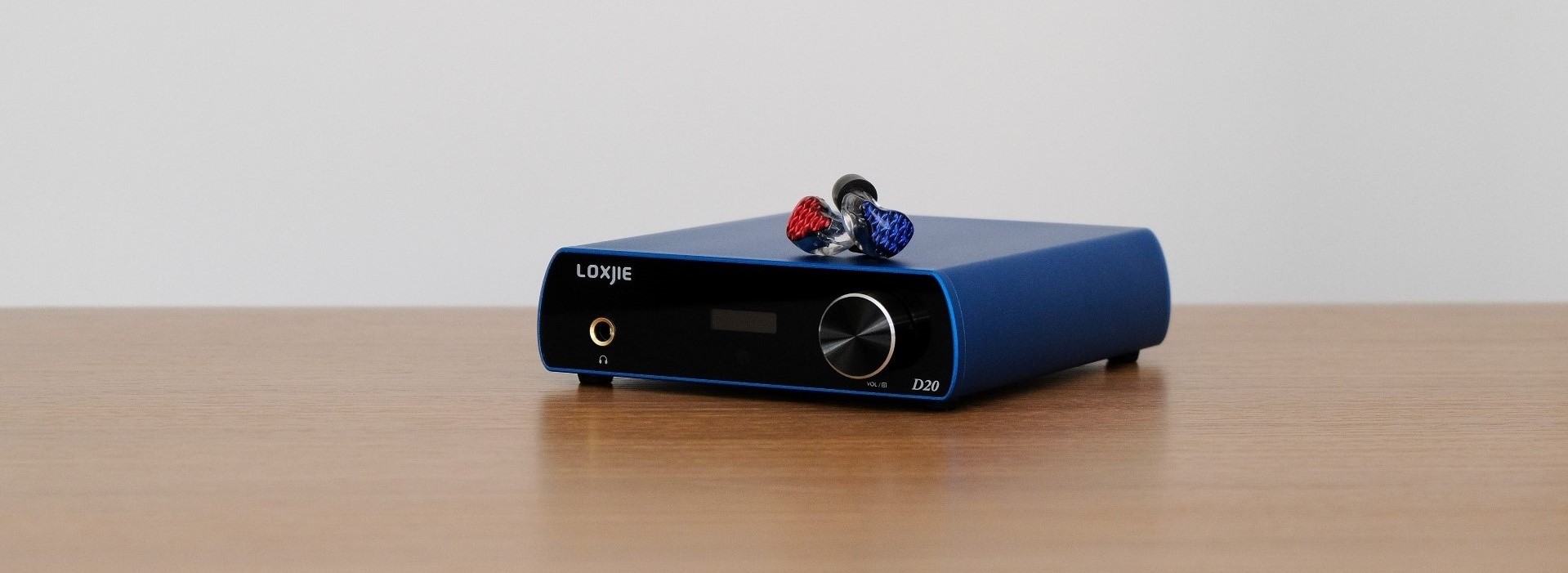
My video review can be seen right here:
You will need a lot of courage, commitment and a bit of insanity in an abundant sea of chi-fi audio components to launch a completely new audio brand and Loxjie did exactly that. They are fairly new with just a handful of products under their belt and their D20 DAC and headphone amp seems to be the most advanced offering at the moment.
They have two products in the D series line-up and D20 is the most interesting one.
Loxjie D20 is a HiFi DAC first and secondly a headphone amp, you can use it as a DAC/Amp combo or as a DAC alone. The market is already overcrowded with such simple to use DAC/Amp combos, so Loxjie needed to stand-out and I think they have something interesting under their sleeve, at least at this price point.
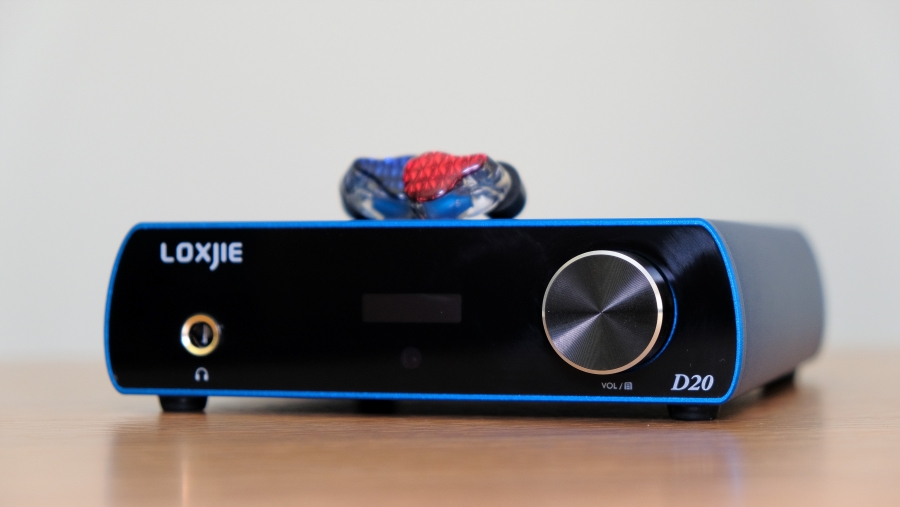
Inside the box
Unboxing experience was quite good, D20 came double boxed for extra protection, the foam inside the box is quite thick so it will surely protect the unit during shipping.
Inside you will find the D20 itself, a user manual, a USB cable, a power cable and a very neat remote control. I forgot how cool is to have a remote at your disposal for such a unit, especially when you are listening to some speakers with it. D20 comes in two variants: in a red case with a matched red volume knob, or in a blue case with a black face-plate and volume knob. I think it looks better in blue (my overall favorite color) as it’s not as blingy.
Loxjie didn’t provide any installable driver as D20 was instantly recognized by my PC as XMOS XHRA-2HPA and started playing without a problem

Design & Build Quality
Design wise D20 looks pretty standard and doesn’t stand out apart from its colorful case. It is quite small, about the same size as Burson Play and Playmate and can be easily integrated into tiny spaces or small offices. The case is a full aluminum CNC one, at about 2mm thickness it should block outside noise easily.
It looks very well put together with very impressive tolerance numbers, on the bottom there are 4 rubber feet to absorb micro-vibrations. The front panel is covered in glass and houses a small OLED screen that will display important information as the selected input, the bitrate and the selected volume level. On the left there is a standard 6.35 mm (1/4”) headphone out and on the right a digital volume knob.
That volume wheel is quite interesting as pressing shortly on it will reveal a nice menu on the OLED display, where you can select the desired digital input, the desired output (HP out or the clean line-out), your filter settings, a simple yet very effective EQ and the display brightness.

The most important settings from the menu in my opinions are the filter settings and the sound EQ (4-th setting), lets check them a bit. There are 6 filter settings that Loxjie implemented: Sharp roll-off, Slow roll-off, Short delay (SD) sharp, Short delay (SD) slow, Super slow and Short Delay.
I tested them all and if you are looking for a reference grade sound with nicer detail retrieval and faster transient response, I recommend the Super Slow filter, I loved that one the most. The default Sharp roll-off is fine as well, there is a small difference between them that will be revealed with higher grade speakers and headphones.
The 4-th setting called simply Sound was a bit tricky to me, it has 4 positions: Default, Current MAX, Current MID and Current MIN. After playing with them I discovered that those are simple EQ settings where default has the EQ disabled, C.MAX with will enhance your treble, C.MID your midrange and C.MIN the bass response. The difference is not that big mind you and most of the time I listened on the default position for a clearer definition of the notes.
All these setting can be controlled by the remote control as well, I recommend checking the user manual for a detailed look as few buttons have no functions whatsoever.
On the backplate you’ll find an AC inlet, 3 (Three!) digital inputs: USB, Optical and coaxial and a pair of clean single ended line-outs. I do really love that Loxjie went an extra mile and put those extra digital inputs, majority of us will use it in front of a PC, that is true, however there are many that use an extra digital transport, a receiver or a game console and for them coaxial and optical inputs are godsent!
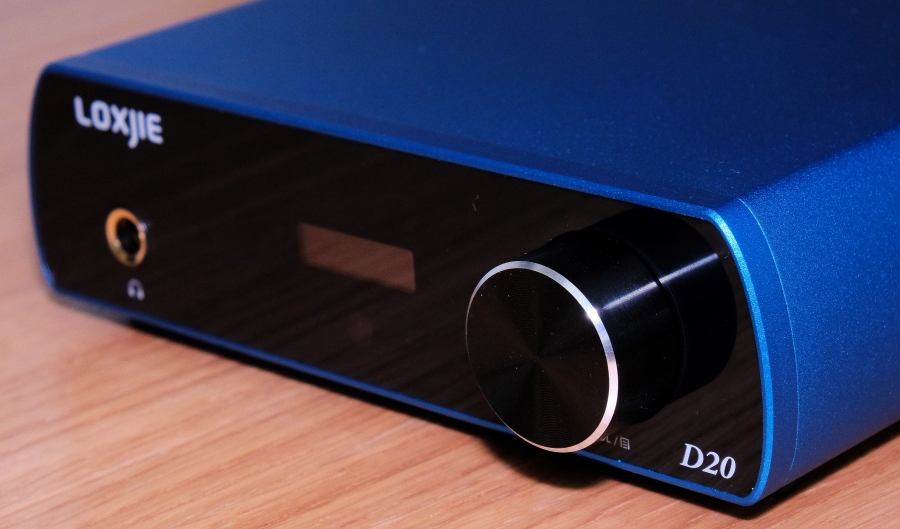
Tech specs and detailed information
The Ace under the Loxjie sleeve is the flagship Asahi Kasei AK4497EQ DAC chip that is part of their VERITA Velvet Sound architecture. Most of the time this DAC chip can be spotted in very expensive and in stupid expensive audio devices ranging from DAPs to high-end DACs. D20 can be had for less than 300 USD at the moment and that is impressive.
D20 is also using a “multi-transistor current amplifier circuit” or MTCAC for short, D20 can be considered a discrete design working in class AB for that low-distortion and high output current on both the RCA and HP out.
Compared to other affordable DAP/Amp units we reviewed recently D20 is using a medical grade toroidal transformer, that is really good news since clean power needs a clean power supply.
D20 is also using a low noise clock system and multiple sets of low noise LDO power supplies to have everything in check.
On the USB input D20 will decode PCM material up to 32 bit / 768 kHz (24 bit / 192 kHz on optic and coaxial) and DSD up to DSD 512 (x4), DSD will however work only on USB input.
Headphone amplifier is a modest one at 220 mW at 32 Ohm, that is more than decent for a portable headphone amp but lower than expected for a desktop solution. It’s headphone out has 40 digital positions and doesn’t offer a gain switch. For my IEMs volume wise I am somewhere between 8 and 15 and with sized headphones I am almost maxed, with planar-magnetics it stays almost at max volume.
You should know that the headphone-out was put there mainly for convenience and will not outperform a dedicated headphone amp and it gets the job done and sounds good with dynamic headphones and decent with planar-magnetics.
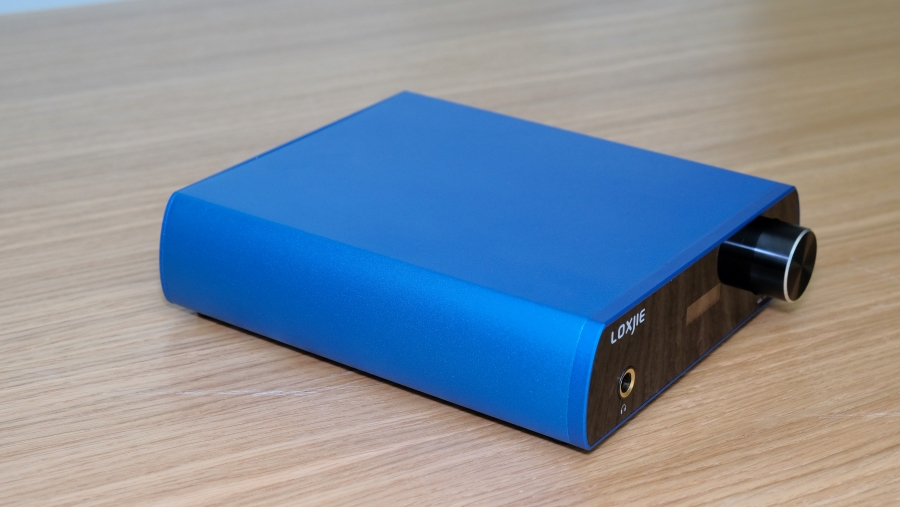
Sound Performance
I. Using D20 as a DAC/Headamp combo in a desktop environment
I first plugged in my very sensitive FiiO FA7 and FH7 the background was black as night and silent as a mummy. I’m glad to report D20 is completely noiseless and free of any hum and can be easily used with IEMs with no sound degradation! I am told this is their second revision with much lower headphone output impedance but no numbers were specified.
With FA7 I immediately started recognizing the “Velvet Sound” of the AKM chips, especially their higher-end ones provide, as the sound had a very impressive flow and natural tone that usual delta-sigma chips are dreaming about. D20 is slightly on the warmer, natural side of things with a rounded frequency response and with no particular emphasis on any frequency area.
I left it on for about 50 hours since the toroidal transformer and the polypropylene capacitors need some burn-in to work at their maximum potential and resumed my listening session.
With IEMs it sounds deeper than I am accustomed to and have really nice holography. The sounds are flying a longer distance before reaching me and create an impression of airiness and breathable sound. Soundstage is a bit wider than usual and can be enhanced by imagination and focus.
There are few crowded tunes where I do prefer to focus only on a single musical instrument and with D20 I can do that. All in all, D20 is not sounding crowded, muddy, slow or boring.
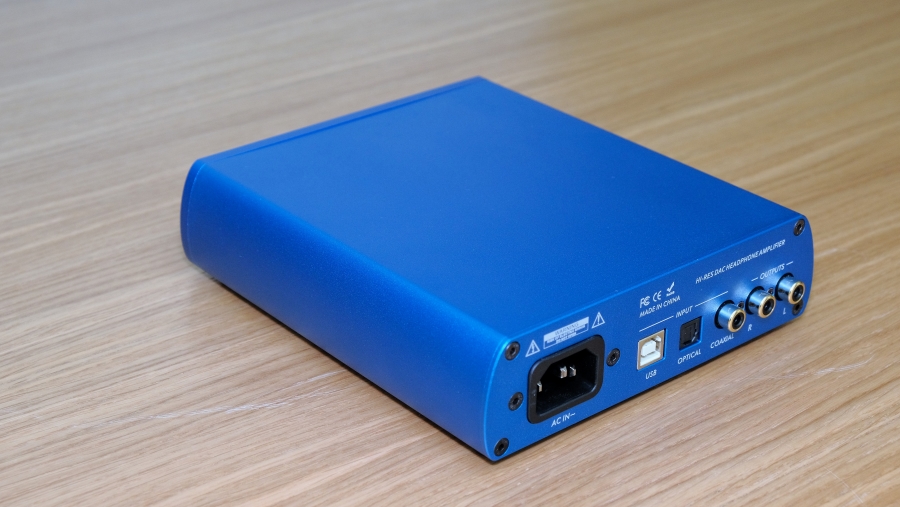
Switching to full-sized headphones, things are getting more interesting, I was comfortable driving my Sennheiser HD660S at about 28 volume and my Quad ERA-1 at about 33 volume (out of 40). For harder to drive headphones D20 could be a problem as it will not provide enough amplification.
I am glad to report that with my particular headphones D20 sounded fine with no major drawbacks. I fired my rock and electronica tunes since lower powered headphone amps with struggle with high dynamic swings and to my surprise D20 sounded well, with good speed and impact, providing a linear listening experience.
In absolute terms it doesn’t have the balls and authority of heavier and much more powerful designs, but that was expected. The slam also was not the best and probably the biggest con of D20 is in the slam department as a heavy drum will not hit as hard as I am accustomed to and double drums will sound subdued and light of its feet.
As with IEMs, using the full-sized headphones revealed an impressive depth and holography, a thing that is surprising especially at this price level (~270 USD at this moment). Soundstage size is medium this time around, a sign that amplification is reaching its limit. However, D20 will never sound crowded or very closed-in even with big cans.
The same seductive, velvety and inviting character was heard on big cans with an emphasis on musicality, flow and less on ultimate technical aspects as crazy detail retrieval or sharp bass and treble.
D20 is not catching attention with its detail retrieval or transparency levels but more with its easier to like sound signature in long listening sessions. In the long run D20 is easy to like and listen, it will not throw crazy transients or sharp outlines of the notes and is surely fatigue-free.
With few high dynamic range tracks (mostly classical pieces) volume wise I was maxxed and was still craving for just a little higher volume, I wish it would have double the power, Loxjie is offering a very affordable P20 tube-based headphone amp for harder to drive headphones. So far, the biggest con of the D20 is the headphone amp section. There is one thing that also needs to be said: at max volume, the noise levels are staying very safe and the D20 is not going into clipping, so no popping or annoying noises at max volume, cool!
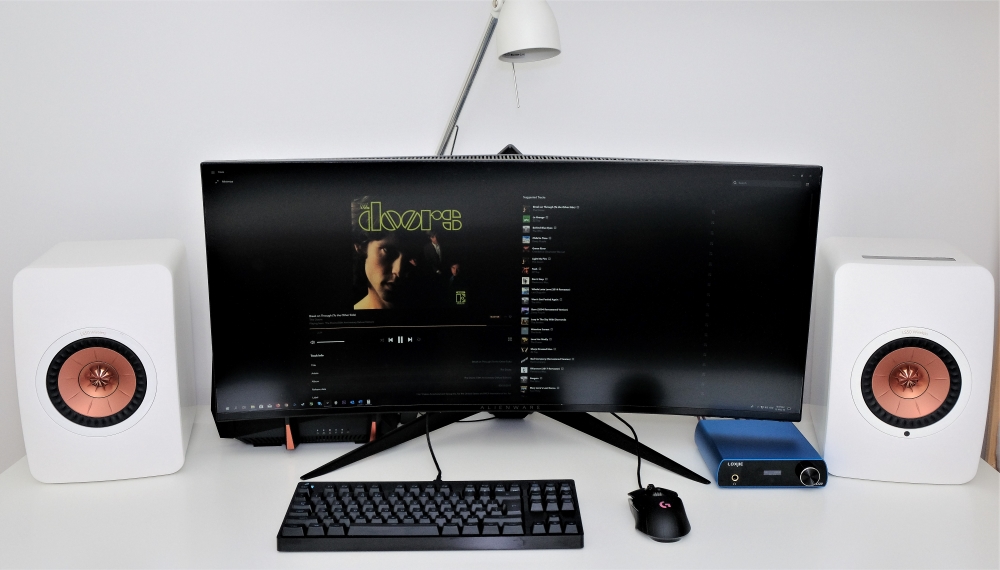
II. Using the D20 as a DAC only in my stereo system
My active KEF LS50W speakers are having an internal Hi-Res DAC but can be connected to external DACs as well and that is exactly what I did.
I am so glad D20 comes with a remote control as in a living room environment it is a must-have.
Sound wise D20 again shown its glorious velvet like and easy to like performance with smoother transients and liquid notes going down.
The biggest surprise for me was than my LS50W sounded even deeper sounding compared to its integrated DAC. The sounds were like coming behind the speakers and a very weird and pleasant way. Soundstage size was about on the same level as sounds were hitting me from different distances in a very natural way. People who know well KEF Uni-Q drivers are impressed by their pin-point imaging capabilities and D20 didn’t ruin those qualities how for example Chord Electronics gear did for me in a speaker environment (very up-front sounding).
Soundstage is again larger than usual and somehow airy, focusing on a single note is even easier to do with speakers than with headphones and D20 is doing that with such ease its mesmerizing.
In terms of frequency response D20 to me offers a rounded presentation with a slight roll-off in the sub-bass and upper-treble area for a very natural performance.
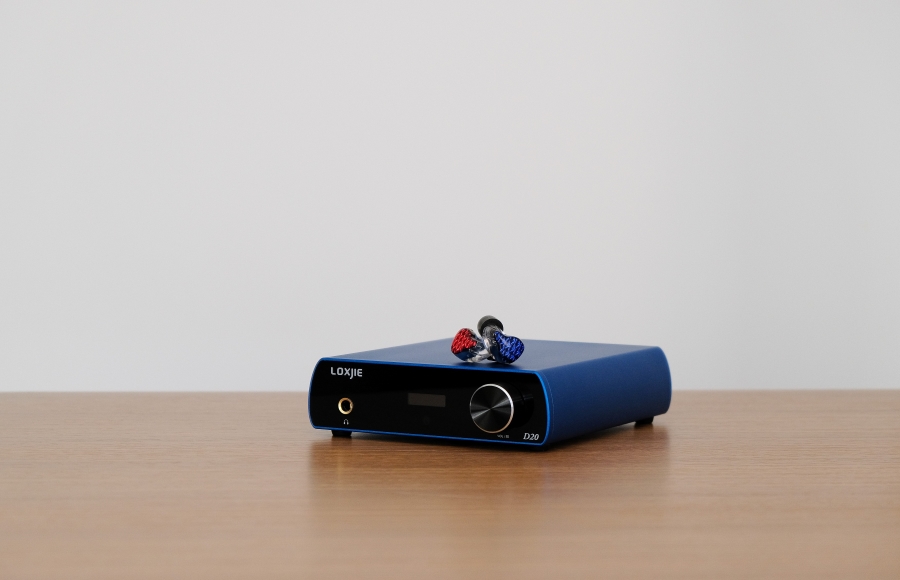
Sub-bass it not hard-kicking in the chest and transient fanatics will not be impressed as much, speed and impact wise D20 is fine but not impressive. Mid-bass notes are sounded much more defined but not overdone or emphasized, smile inducing frequency range is not boosted and it is not following the Harman curve. Overall bass performance is quite linear without catching attention of the listener.
Midrange is where D20 really shines as it will throw mid-tones forward a bit most of the time. Vocals are really nice, centered and very present. This is not really surprising for me as AKM chips are basically kings in the midrange department with life-like audio performance across the board. String based instruments have just a tiny bit longer decays than I am accustomed to, guitars will gentle sweep and violins will vibrate just a bit longer.
One thing where D20 really shines is the overall meaty tone and timbre, almost all Verita DAC chips are sounding like this.
Treble is clear and very present but never overbearing and harsh. Lower and mid-treble are really fine, only the upper-treble is having what I am calling a natural roll-off, starting with 16 kHz it starts to decline and will never clench your teeth even with bright speakers or headphones.
My KEFs are very impressive up-top and have a lot of information in the upper treble but are never harsh with D20, I can basically listen to absolutely any song with it without worrying about frequency response at all.
D20 holds an interesting trait, with it I don’t want to analyze my music, don’t want to split into frequencies or something like that, I just want to relax and listen to it. That flow and ease is obsessing me…
In terms of detail retrieval D20 is good but not impressive and doesn’t hold a candle to the ESS Sabre (second generation) designs as those will offer more micro-details and will have better transparency levels.

Comparisons
Loxjie D20 (240 USD/ 230 EUR) VS xDuoo TA-10 (290 USD / 260 EUR)
D20 is solid state based with a higher end DAC chip, while TA-10 is a hybrid design (transistor input, tube output) with a lower-class DAC chip. Build quality wise both are impressive and are build from solid sheets of aluminum.
Is it hard to believe, but in terms of sound performance these two are more alike than different. I don’t know how that was possible but there are very small differences. Both have and impressive flow, sound natural, with an open wide soundstage and great imaging and holography.
Listening closely, TA-10 will have a much higher headphone drive and will pilot even hardest to drive headphones, however it comes with a big price: TA-10 is very bad news for IEM users and it has a lot of noise with a dirty background, it’s no bueno for IEMs really.
Overall, D20 is clearer sounding, with more information almost everywhere, it will have more of everything and will be more detailed and clean sounding.
Due to higher power TA-10 is having a faster kick and a better slam, D20 by comparison is smoother and easier on the ear. TA-10 will also portray a bigger and wider stage, however D20 will have it clearer and will offer better pin-point imaging.
As a DAC only device D20 really impressed me, TA-10 not so much mostly because it is not as clear sounding and not as transparent, for me there is no contest, D20 is just a much better sounding DAC.
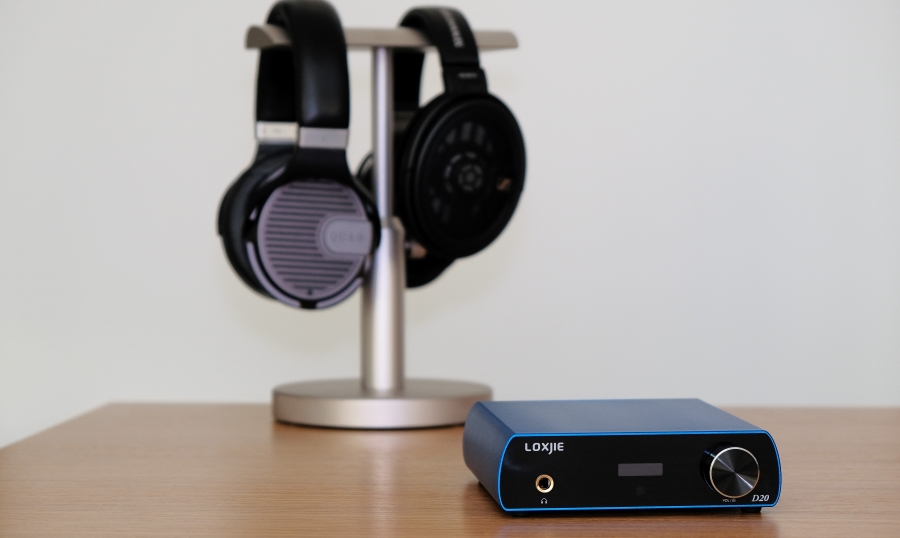
Loxjie D20 (240 USD / 230 EUR) VS Burson Playmate Basic (399 USD / 399 EUR)
Both are solid state designs; both are discrete designs but Playmate has a much beefier final output stage. D20 is using a higher performance AKM chip, Playmate is using an ES9038Q2M (mobile) chip, both are very advanced and are using among the best commercial chips from the market.
Using both with headphones Burson Playmate will kick faster, harder and will offer much more power on tap, it works well with IEMs as well. D20 went ahead in the soundstage and depth department as it sounded decompressed by comparison.
Burson Playmate has a very raw sounding performance, very dynamic with crazy dynamic swings, Loxjie D20 is smoother and calmer and will work better with slower music. For a DAC/Headphone amp combo is slightly more versatile since it more power on tap and sounds good from IEMs to desktop planar-magnetics.
When it comes to DAC only performance Burson Playmate have a dirtier presentation, with less refinement, it is also up-front sounding.
Loxjie D20 by comparison sound grander, reaching deeper, have better pin-point imaging and holography, it will just decompress your speakers. D20 is also quite airy, smooth and refined.
Just because it has an airier presentation, transparency levels are also improved and each musical note will have a bigger air bubble and delimitation.
Detail retrieval wise I think it is a tie, both will sound as clear and detailed and will extract tiny micro-details quite easy.
Again, as a DAC/headphone amp combo Burson Playmate is more versatile, but it is also more expensive.
As a DAC alone D20 offers some traits that the Playmate doesn’t have, different strokes for different folks really.
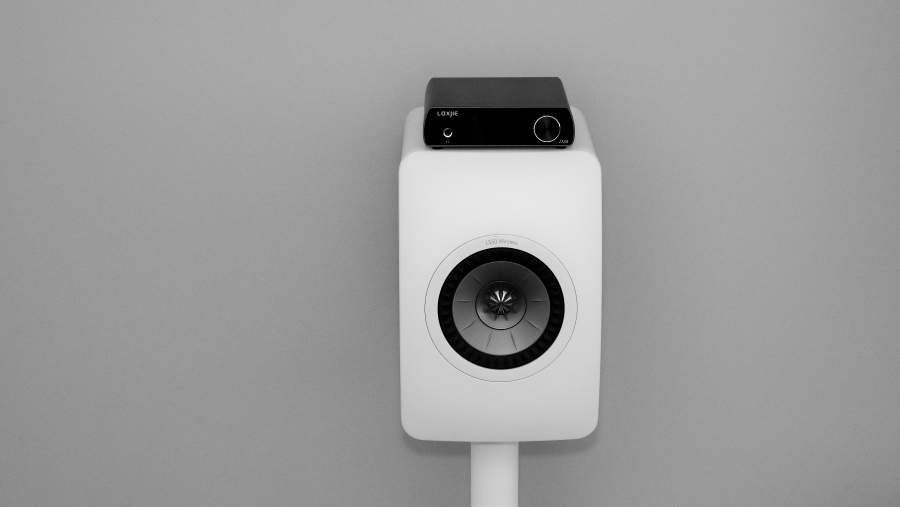
Conclusions
This is my first contact with Loxjie and hopefully it will not be my last. Build quality wise there is nothing to complain about, it’s sturdy and nicely built. I wish Loxjie would also offer a simple all-black and all-silver options since majority of us have rest of the gear in a neutral color.
Here is also a tip for a MK2 version in the future: make the display bigger, like twice or thrice the size, there are older listeners too, you know.
Sonically, as a DAC only device it was a pure joy to listen to in longer listening sessions as it was always smooth, refined, easy going and relaxed.
Speed, impact and slam fanatics will need to look-up into something else as D20 will not deliver that. As a headphone amp it was fine with easier to drive desktop headphones and IEMs, a very black background helped a lot enjoying my time with it. However, D20 will not offer a strong headphone output and will struggle with harder to drive headphones on high dynamic passages, I recommend a separate headphone amp for it for that matter.
Sincerely, for a 240 USD device carrying the best AKM Verita chip inside this DAC is a steal.
Loxjie D20 can be purchased at a reduced price from here
PROS:
- Smooth, relaxed and refined tonal balance
- Great flow and easiness
- Decent headphone amp section with a very black background
- Good depth, pin-point imaging and holography
- wider than usual soundstage
- Good price to performance ratio
CONS:
- Rolled-off sub-bass and upper treble
- Weak slam and impact
- Low power headphone amp section
Associated Equipment
- Headphones: Quad ERA-1, Sennheiser HD660S, Sennheiser Momentum 2, FiiO FA7, FH7
- DAC: LOXJIE D20, Matrix X-Sabre Pro with X-SPDIF 2, Burson Playmate, xDuoo TA-10
- Headphone Amps: HeadAmp Gilmore Lite Mk2, Burson Playmate, xDuoo TA-10
- Speakers: KEF LS50W
- Cables: QED Reference, Burson Cable+ PRO, Audioquest & Kimber interconnects
